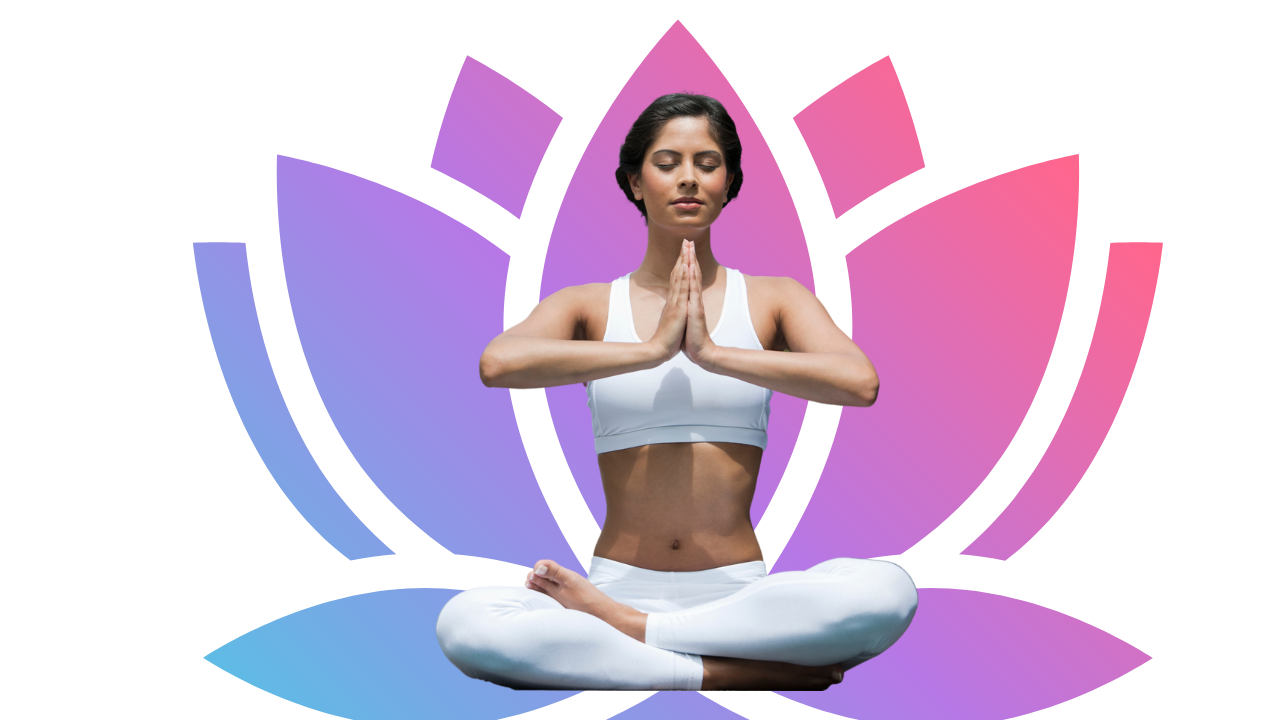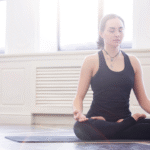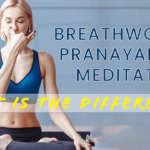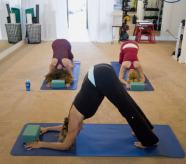What is Yoga A Holistic Approach to Well-being
Yoga, an ancient practice originating in India, is far more than just a series of physical exercises; it is a holistic discipline that seeks to unify the mind, body, and spirit. Derived from the Sanskrit word “yuj,” meaning “to yoke” or “to unite,” yoga aims to achieve harmony and inner peace through various techniques including physical postures (asanas), breathing exercises (pranayama), and meditation (dhyana) [Yoga Journal]. While often recognized in the West primarily for its physical benefits, such as improved flexibility and strength, its deeper purpose extends significantly to spiritual and mental well-being, cultivating a profound connection within oneself and with the world [Yoga Journey].
The practice encompasses a rich philosophy that guides practitioners towards a balanced and mindful lifestyle. It encourages self-awareness, discipline, and a deep understanding of one’s inner workings. Through regular practice, individuals can experience significant enhancements in mental clarity, emotional regulation, and stress reduction, leading to a more serene and fulfilling existence [Yoga Journey]. Furthermore, yoga is known for its ability to foster a stronger mind-body connection, helping individuals become more attuned to their physical sensations and emotional states [Yoga Journey]. Ultimately, the essence of yoga lies in its transformative power to cultivate not just physical health, but also mental tranquility and spiritual growth, offering a path to live a more conscious and integrated life [Yoga Journey].
Understanding Asana The Foundation of Yoga Postures
Asana, derived from the Sanskrit root “as” meaning “to sit,” literally translates to “seat” or “posture” [Yogapedia]. In the context of yoga, an asana refers to a physical posture or position, often held for a period, designed to bring stability and ease to the body and mind. It is a fundamental component of the physical practice of yoga, serving as a gateway to deeper states of self-awareness.
Historically, the concept of asana evolved significantly. In ancient texts like Patanjali’s Yoga Sutras, asana was primarily understood as a steady and comfortable seated posture suitable for meditation [Ekhart Yoga]. The focus was on preparing the body to remain still for extended periods, facilitating deeper states of concentration and meditation. Over centuries, particularly with the emergence of Hatha Yoga, the practice expanded to include a wider variety of physical postures, emphasizing bodily purification, strength, flexibility, and the balanced flow of vital energy (prana) throughout the body [Yoga Basics].
The purpose of asana extends beyond mere physical exercise. While asanas certainly offer tangible physical benefits like increased flexibility, strength, balance, and improved circulation, their deeper objective is to foster a profound mind-body connection [YogaJourney]. By consciously engaging with the body and breath, practitioners can calm the nervous system, reduce stress, and cultivate inner awareness [DoYou]. This deliberate engagement helps release physical and mental tension, improve posture, and prepare the practitioner for more subtle yogic practices such as pranayama (breathwork) and meditation [YogaJourney]. Ultimately, asanas are a foundational element of a holistic yoga practice, contributing to overall well-being by integrating physical discipline with mental focus and spiritual awareness [YogaJourney].
Exploring Different Yoga Styles
Yoga offers a rich tapestry of styles, each with distinct characteristics and approaches, catering to various preferences and fitness levels. Understanding these differences can help practitioners find a style that best suits their needs, whether they seek a vigorous workout, deep relaxation, or a meditative experience.
Hatha Yoga
Often considered a foundational style, Hatha yoga typically involves holding static poses for several breaths, focusing meticulously on alignment, breath control (pranayama), and mindfulness. It’s generally slower-paced and gentler than more dynamic styles, making it an excellent choice for beginners looking to learn basic poses and build a strong foundation. Many contemporary yoga styles trace their roots back to Hatha yoga principles, making it a pivotal starting point for understanding other practices [YogaBasics].
Vinyasa Yoga
Vinyasa, often called “flow yoga,” is characterized by its dynamic and fluid sequences where movements are synchronized with the breath. Each movement smoothly transitions into the next, creating a continuous, dance-like flow. Classes vary widely, often incorporating diverse poses and creative sequencing that can build significant heat and intensity. This style builds heat, strength, and flexibility, appealing to those who enjoy a more vigorous and rhythmic practice [Yoga Journal]. For general tips on how to learn yoga poses effectively within a flow, consider visiting How to Learn Yoga Poses: 13 Tips for Beginners.
Ashtanga Yoga
Ashtanga is a highly structured and physically demanding style, consisting of a fixed series of poses performed in the exact same order every time. It emphasizes a continuous flow (vinyasa), deep breathing (ujjayi), specific gaze points (drishti), and internal energy locks (bandhas). Practitioners typically move through primary, intermediate, and advanced series, building immense strength, endurance, and discipline. This rigorous practice is often taught in a Mysore-style setting, where students practice at their own pace with individual guidance rather than a led class [Ashtanga Yoga].
Yin Yoga
In stark contrast to more active styles, Yin yoga focuses on long-held, passive stretches, typically lasting 3-5 minutes or more. These poses primarily target the deep connective tissues of the body—ligaments, joints, bones, and fascia—rather than the muscles. Yin yoga is usually practiced seated or lying down, with muscles relaxed, allowing gravity to deepen the stretch. It encourages introspection and stillness, making it profoundly beneficial for increasing flexibility, improving joint health, and cultivating a deep meditative state [Yoga International]. This focus on stillness and holding poses can complement practices aimed at establishing a meditation routine, as discussed in How to Meditate Daily and Establish a Meditation Routine.
Choosing the Right Yoga Class for Beginners
When you’re new to yoga, choosing the right class can feel overwhelming amidst the many styles available. Several styles are particularly well-suited for beginners, as they focus on foundational poses, proper alignment, and mindful movement, creating a safe and welcoming entry point into the practice.
Gentle Yoga
As the name suggests, gentle yoga classes are designed to be accessible and less strenuous. They often incorporate props like blocks, straps, and blankets to support the body in poses, making them ideal for those with limited mobility, recovering from injuries, or simply seeking a more relaxed pace [Verywell Fit]. These classes focus on gentle stretching, deep breathing, and relaxation, providing a nurturing environment to explore yoga without pressure.
Restorative Yoga
Restorative yoga is all about deep relaxation and rejuvenation. In these classes, you hold a few poses for extended periods, typically 5 to 20 minutes, supported by numerous props like bolsters, blankets, and eye pillows. The primary goal is to release tension, calm the nervous system, and encourage deep rest rather than physical exertion [Gaia]. It’s an excellent option for stress relief, managing chronic pain, and for learning to be still and present in your body and mind.
Iyengar Yoga
Iyengar yoga places a strong emphasis on precise alignment and the meticulous use of props to help students achieve proper form. While the attention to detail might seem intense, this focus makes it very beginner-friendly, as instructors provide clear, specific guidance on how to execute each pose safely and effectively [Ekhart Yoga]. This style can be particularly beneficial for building a strong foundational understanding of poses and body mechanics, ensuring a safe and informed practice as you progress.
Vinyasa (Beginner/Level 1)
While Vinyasa yoga is known for its flowing sequences, many studios offer “Beginner Vinyasa” or “Vinyasa Level 1” classes specifically tailored for new practitioners. These classes introduce the fundamental poses and transitions at a slower, more deliberate pace, allowing you to learn the rhythm of breath-synchronized movement without feeling rushed. It’s a great way to experience a more dynamic style once you’re comfortable with basic poses and ready for a bit more movement.
What to Consider When Choosing
When selecting your first yoga class, consider the following:
- Pace: Do you prefer a slow, meditative pace or something more dynamic?
- Focus: Are you looking for deep relaxation, a physical challenge, or precise alignment?
- Instructor: A good instructor is crucial for beginners. Look for teachers who offer clear cues, modifications, and a supportive presence.
- Studio Atmosphere: Visit a few studios to find one where you feel comfortable and welcomed.
Remember, starting your yoga journey is about exploring what feels right for your body and mind. Don’t be afraid to try different styles and instructors until you find your perfect fit. For more general tips on getting started, explore our guide on How to Learn Yoga Poses: 13 Tips for Beginners.
Yoga for Enhancing Memory and Concentration
Yoga, an ancient practice integrating physical postures, breathing exercises, and meditation, offers profound and scientifically supported benefits for enhancing both memory and concentration. Its holistic approach positively impacts cognitive function through several interconnected mechanisms.
One primary way yoga supports cognitive health is by reducing stress and anxiety [PMC]. Chronic stress is known to impair the hippocampus, a critical brain region for memory formation and retrieval. Practices like meditation and deep breathing techniques inherent in yoga help lower cortisol levels, thereby protecting brain health and significantly improving overall cognitive performance [PMC].
Furthermore, yoga improves blood circulation to the brain, which ensures a richer and more consistent supply of oxygen and essential nutrients necessary for optimal brain function. Increased cerebral blood flow can enhance neural connectivity and support the growth of new brain cells, contributing to better memory recall and overall cognitive agility [PMC].
The mindful aspect of yoga, particularly the intense focus on breath and body awareness, directly cultivates concentration. Practices that encourage a drishti (fixed gaze point) or the sustained holding of challenging poses train the mind to stay present and reduce mental wandering. This heightened focus translates into improved concentration in daily tasks and enhanced learning capabilities. Regular yoga practice can even lead to increased gray matter volume in brain regions associated with memory and attention, such as the hippocampus and prefrontal cortex, indicating structural changes that support cognitive enhancement [The Clinical Journal of Pain].
Yoga’s ability to enhance the mind-body connection also plays a significant role. By integrating physical movement with breath and awareness, yoga helps individuals become more attuned to their internal states, reducing mental clutter and improving mental clarity. This clarity is a cornerstone for effective memory recall and sustained attention, making yoga a powerful tool for cognitive enhancement.
Chakra Meditation A Journey Through Your Energy Centers
Chakra meditation is a profound practice rooted in ancient Indian traditions, focusing on the seven primary energy centers within the body, known as chakras. These centers are believed to influence various physical, emotional, and spiritual aspects of our being, acting as vital hubs for our life force energy [Chopra]. The term “chakra” itself comes from the Sanskrit word for “wheel” or “disk,” symbolizing the spinning vortices of energy that align along the spine, from the base to the crown of the head [Yoga Journal].
The primary goal of chakra meditation is to cleanse, activate, and balance these energy centers, promoting overall well-being and a deeper connection to oneself. When chakras are blocked, overactive, or unbalanced, it’s believed to manifest as physical ailments, emotional disturbances, or mental fog, impeding the natural flow of energy [Verywell Mind]. Through focused awareness, visualization, breathwork (pranayama), and sometimes specific sounds (mantras) or hand gestures (mudras), practitioners aim to restore the harmonious flow of energy, leading to greater vitality and balance.
Each of the seven main chakras is associated with specific colors, elements, emotions, and bodily functions:
- Root Chakra (Muladhara): Located at the base of the spine, associated with stability, security, and grounding. Color: Red.
- Sacral Chakra (Svadhisthana): Located in the lower abdomen, linked to creativity, emotions, and pleasure. Color: Orange.
- Solar Plexus Chakra (Manipura): Located in the upper abdomen, connected to personal power, will, and self-esteem. Color: Yellow.
- Heart Chakra (Anahata): Located in the center of the chest, associated with love, compassion, and healing. Color: Green or Pink.
- Throat Chakra (Vishuddha): Located in the throat, linked to communication, truth, and self-expression. Color: Blue.
- Third Eye Chakra (Ajna): Located between the eyebrows, connected to intuition, wisdom, and inner vision. Color: Indigo.
- Crown Chakra (Sahasrara): Located at the top of the head, associated with spiritual connection, enlightenment, and universal consciousness. Color: Violet or White.
During chakra meditation, individuals often focus on one chakra at a time, visualizing its associated color and feeling its energy, or they may perform a sequence that moves through all seven. Benefits often reported include reduced stress and anxiety, improved emotional balance, enhanced intuition, increased energy, and a greater sense of spiritual awareness [Chopra]. This practice can be a powerful tool for those seeking to deepen their spiritual journey and achieve a more balanced and harmonious life, aligning with broader yogic principles of spiritual health and wellness, as discussed in 12 Yogic Ways to Cultivate Spiritual Health and Wellness and 12 Spiritual Benefits of Yoga. For more on general meditation techniques, explore resources like How to Meditate Daily and Establish a Meditation Routine.
Eagle Arms (Garudasana Arms) A Detailed Exploration
Eagle Arms, or *Garudasana* Arms, are a distinctive component of the larger Eagle Pose in yoga, but they can also be practiced independently or integrated into other postures. This arm position involves crossing one arm over the other, bending the elbows, and wrapping the forearms so the palms press together, or the back of the hands touch. The top arm’s elbow nestles into the crook of the bottom arm’s elbow, creating a powerful bind that provides a deep stretch to the shoulders and upper back [Yoga Journal].
How to Practice Eagle Arms
- Start with arms extended: Begin by reaching both arms straight out in front of you at shoulder height.
- Cross the arms: Bring one arm (e.g., the right arm) under the other (left arm) at the elbow. Ensure the elbows are stacked.
- Bend the elbows: Bend both elbows, lifting the forearms perpendicular to the floor, so your fingertips point towards the ceiling.
- Wrap the forearms: If possible, wrap the forearms around each other, bringing the palms to touch. If the full bind is not accessible, the back of the hands can press together, or simply clasp your wrist or forearms.
- Lift the elbows: Gently lift the elbows away from the chest while simultaneously pressing the forearms away from the face. Maintain a slight lift in the chest and broaden the upper back, creating space between the shoulder blades [Ekhart Yoga].
- Hold and breathe: Hold the position for several breaths, focusing on the stretch in the shoulders and upper back, allowing tension to release with each exhale.
- Release and repeat: Unwind the arms slowly and gently, shaking them out if needed, then repeat on the other side, crossing the opposite arm underneath.
Benefits of Practicing Eagle Arms
- Shoulder and Upper Back Stretch: This pose effectively stretches the shoulders, upper back, and rotator cuff muscles, helping to release tension often accumulated from daily activities like prolonged sitting at a desk [YogaBasics.com]. This can be particularly beneficial for those experiencing neck pain or stiffness.
- Improved Flexibility: Regular practice can enhance flexibility and range of motion in the shoulder girdle and scapular region, promoting healthier joints.
- Release of Shoulder Tension: The unique binding action can help to untangle knots and release chronic tension in the shoulders and upper back, promoting a significant sense of ease and lightness.
- Enhanced Circulation: The compression and subsequent release action can stimulate circulation in the upper body and arms, bringing fresh blood and nutrients to the tissues [Yoga Journal].
- Focus and Concentration: Balancing the arms in this intricate way requires mindful attention and presence, which can enhance focus and concentration, and deepen the mind-body connection.
- Grounding and Centering: Despite being an upper-body pose, the internal focus and balance required can contribute to a sense of grounding and stability, especially when combined with breathwork.
Variations and Modifications
- Hands to Shoulders: If the full bind is not accessible, hug your opposite shoulders, crossing your arms and placing each hand on the opposite shoulder blade. This still provides a beneficial stretch in the upper back.
- Wrist Grab: Alternatively, you can reach for your opposite wrist instead of pressing palms together, which offers a slightly less intense variation while still engaging the shoulders.
- Integrating with Other Poses: Eagle Arms can be incorporated into various seated or standing poses like Chair Pose (*Utkatasana*), or even used in a meditative seated position to open the shoulders and promote a sense of calm. For more on meditation, explore how to meditate daily.
Sources
- Ashtanga Yoga – Ashtanga Yoga
- Chopra – Chakra Meditation: A Guide to Balancing Your Energy Centers
- DoYou – Physical & Mental Benefits of Yoga Asanas
- Ekhart Yoga – How to do Eagle Arms
- Ekhart Yoga – What is Iyengar Yoga?
- Ekhart Yoga – What is Asana?
- Gaia – Restorative Yoga Beginners Guide
- The Clinical Journal of Pain – The Yoga and Meditation Based Stress Reduction
- PMC – Does Mindfulness-Based Stress Reduction Improve Cognition in Older Adults? A Review of the Research
- PMC – The effect of yoga on emotional control and stress in women with polycystic ovary syndrome
- PMC – Mindfulness-Based Stress Reduction and Its Effect on Mood, Anxiety, and Stress
- Verywell Fit – Gentle Yoga: A Complete Guide
- Verywell Mind – Chakra Meditation: A Complete Guide
- YogaBasics – Eagle Pose Benefits & How To
- YogaBasics – The History of Yoga
- YogaBasics – What is Hatha Yoga?
- Yoga International – What is Yin Yoga?
- Yoga Journal – Chakra Meditation
- Yoga Journal – Eagle Pose
- Yoga Journal – Hatha Yoga: A Comprehensive Guide
- Yoga Journal – Vinyasa Yoga Guide
- Yoga Journal – What is Yoga?
- Yogapedia – Asana Definition
Conclusion:
Yoga is a holistic practice uniting body, mind, and spirit through postures, breathwork, and meditation.
Asanas build strength, flexibility, and awareness while preparing for deeper practices.
Different yoga styles—from gentle and restorative to dynamic vinyasa and ashtanga—cater to diverse needs.
Beyond fitness, yoga enhances memory, focus, and energy balance, offering a path to well-being and inner peace.Yoga is a holistic practice uniting body, mind, and spirit through postures, breathwork, and meditation.
Asanas build strength, flexibility, and awareness while preparing for deeper practices.
Different yoga styles—from gentle and restorative to dynamic vinyasa and ashtanga—cater to diverse needs.
Beyond fitness, yoga enhances memory, focus, and energy balance, offering a path to well-being and inner peace.











